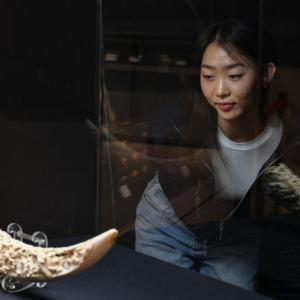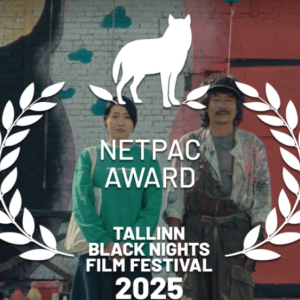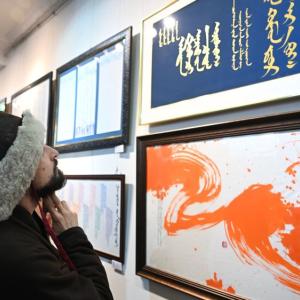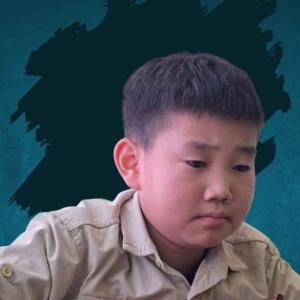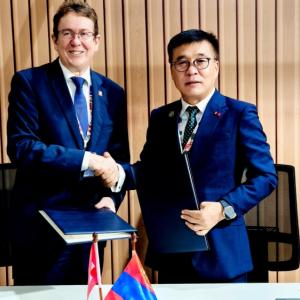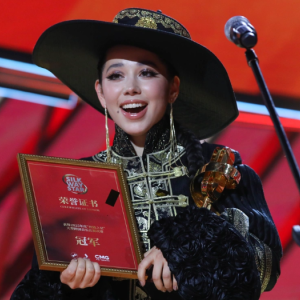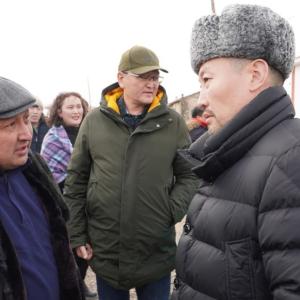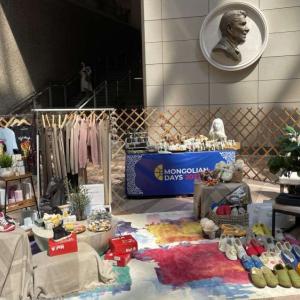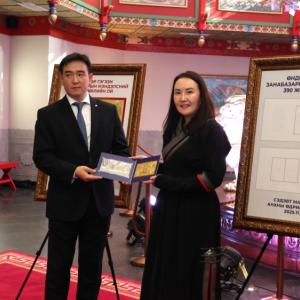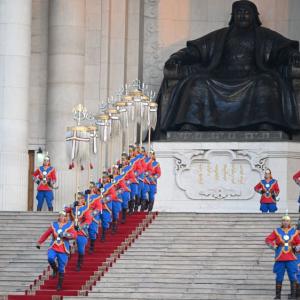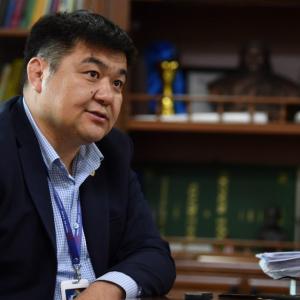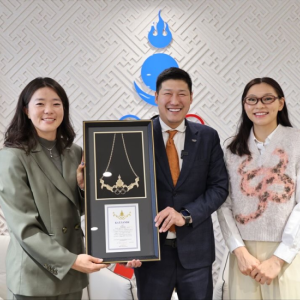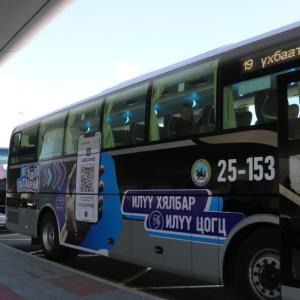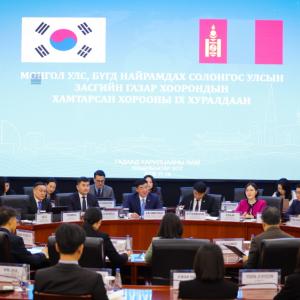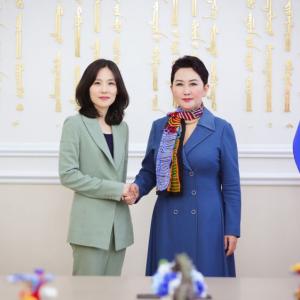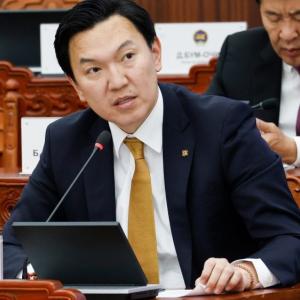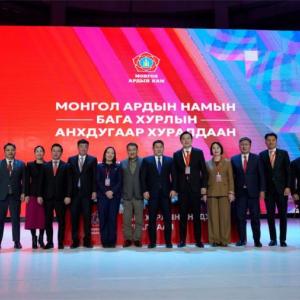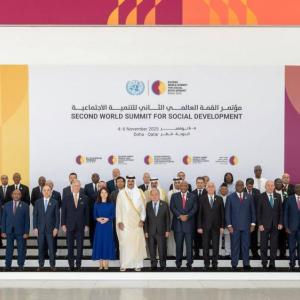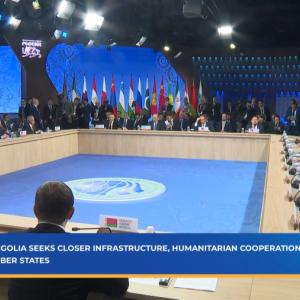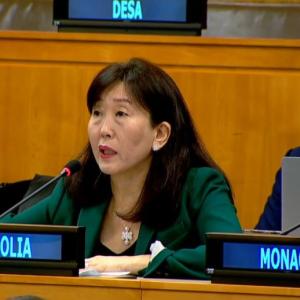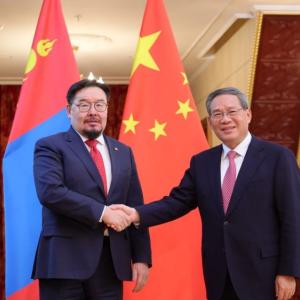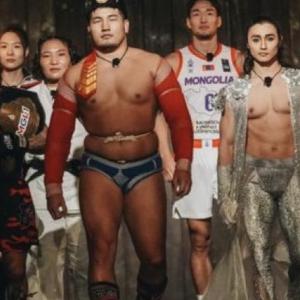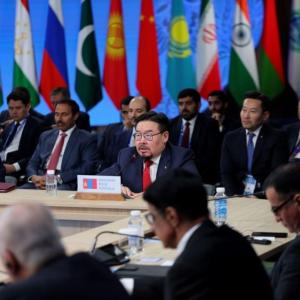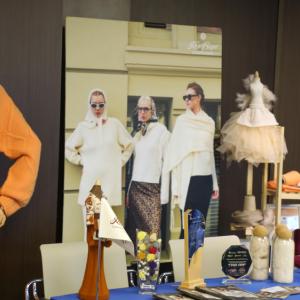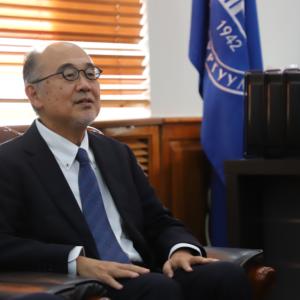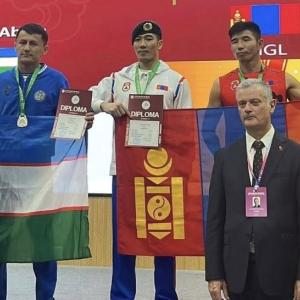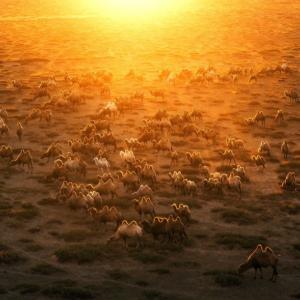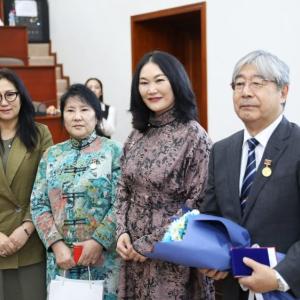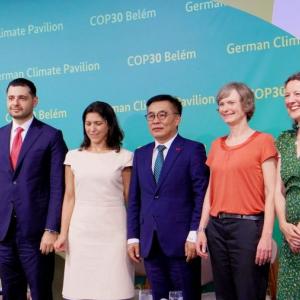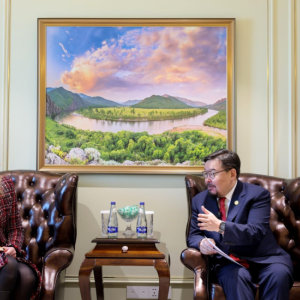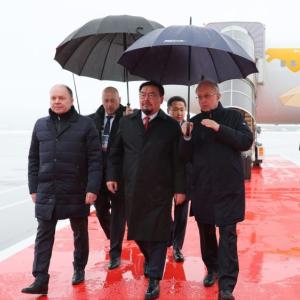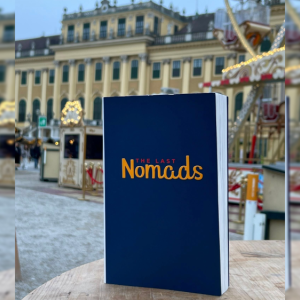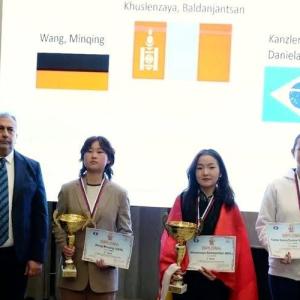Julia Neuhaus: Art needs an audience. A picture on the wall is just acrylic paint, unless nobody is realizing that there was somebody who put an idea into form
Society
Ulaanbaatar /MONTSAME/. Nogoonbaatar International Eco Art Festival has launched its activities in March of 2021, involved Mongolian, French, Czech and German artists targeting Ger Districts of Ulaanbaatar city. Here we would like to introduce you an art critique Batzorig Mart’s interview with German artist Julia Neuhaus, the participant of the Festival.
Julia Neuhaus, a freelance German artist, book
illustrator and teacher, taught the students of the graphic design class at the
Academy of Fine Arts a week-long online lesson of about 20 hours on how to
develop drawing book ideas and techniques.
The students who participated in the competition announced at the Nogoonbaatar Eco-Arts Festival created many interesting works on the topic of air pollution based on what they learned.
Julia Neuhaus studied painting at the University of Hamburg. Since 2008 she has worked as a freelance artist for various books and newspaper publishers and has published his own illustrated books. Julia lives with her husband, writer and caricaturist Till Pencek and their two children in Hamburg. Together they create picture books, animations and applications for children. They also work together on animation and art projects under the name "Quantenkatze". Julia Neuhaus also teaches "Picture books" and "Understanding picture books" at German universities.

How did you respond to the invitation to cooperate with the Nogoonbaatar Eco Art Festival, and what attracted you to this event?
I got
the invitation through Goethe-Institute. I already did workshops and taught illustration at university. I am a children’s
book illustrator and of course I was pleased that my picture-book “Die
Klimaschweine”, which is about climate change, obviously was the reason why I
was asked for the workshop. An art festival, dealing with environmental and
ecological issues, planning a workshop with art students, in collaboration with
a book publishing house. That sounded very interesting to me!
How much did you know about Mongolia before participating in this project?
To be
honest, not so very much. But I have a wonderful illustrated children’s book
with maps of the world. (“Maps”, by Aleksandra Mizielinska and Daniel
Mizielinski). And there is also a big map of Mongolia and I learned some
things: How a Yurt is constructed. What Schagai, airag, chuuschuur and süütej
tsaj is. How
Mongolian
traditional dresses look like. That morin chuur is a music instrument. That there
is hunt with hawks and Mongolian wrestling… It is all wonderfully illustrated
on the map. I am really disappointed that covid prevented me visiting Mongolia!
But we can see that illustration can do a really unique thing: It lets know at
least a little bit about a place we cannot visit actually in reality!
Why did you become an illustrator? What do you think of the advantages of illustration over other forms of art? What is your main goal in this field?
I
became an illustrator because I liked to draw and paint and I was interested in
book design. But after a while I realized, that illustrating is about inventing
characters and their worlds and it’s especially about storytelling. A good
illustrator is a visual storyteller. An illustration puts a message into a
picture and makes ideas visible. I like to tell a story and make things
visible. That’s my job.
When I visited your website, I saw your workshop for children and adults in Germany, based on their participation. During your workshop for Nogoonbaatar, did you notice any differences in the attitudes of Mongolian and German audience, and if so, what were they?
It took some time in the beginning of the workshop until we got warm with each other. It is not so easy to feel each other only by meeting online! But no, I didn’t really find differences in attitude. In the workshop we talked for example about the poetical pictures of “The Promise”, a book of the illustrator Laura Carlin. It turned out that our feelings while reading the pictures where very similar. We recognized that we all read the same message. That was a wonderful moment. We were the same mind and saw the same touching story.

What do you think are the similarities and differences between illustration and public art?
We all
work with pictures. A sculpture in a public space for example is a kind of 3D picture
in a special environment. Through your eyes the picture comes into your brain, making
us think about it. An illustration is also a picture in an environment (the environment
is the book, a magazine, a poster) arriving at your brain. And you are thinking
about it. I don’t draw a line between both.
Why is public participation important in art?
Where
is the sense in asking questions if no one is listening? Art needs an audience.
A book is just a pile of paper if no one is reading it and I suppose a
sculpture would be just wood or stone. A picture on the wall is just acrylic
paint, if nobody is realizing that there was somebody who put an idea into
form.
How did the pandemic affect your work and daily life?
My
children had to stay at home for long. We as parents have to deal with the
schooling and we have to do this while working. We didn’t see the grandparents
for a long time… But hey, 100 000s of people have these problems, and many face
really serious existential difficulties! I shouldn’t complain.
Due to the pandemic, foreign artists were unable to participate in the Nogoonbaatar Eco Art Festival. How do you feel about participating in art events in this way? What are the advantages and disadvantages?
Of
course it would have been nicer to be there physically with the workshop participants.
It is challenging to get a feeling for the personality and the needs of a student
you have never met before, if you only meet on screen. Also the students had to
work at home and separate from each other, which is unusual for a workshop!
This way it is harder to create a “workshop feeling” and to keep up the
tension. Anyway. We did it and we all tried to do our best! We laughed and we
talked and we discussed. We saw a lot of books and pictures and their messages.
There are results of the students work to look at. So: I am happy. I wouldn’t
have been able to do the workshop at that time at all, if it wasn’t online! Like
this I was flexible enough to integrate it into my timetable and we were able
to split it into different sessions to stretch it over two weeks. The students
worked on the task between the sessions, each one the way it fitted into
her/his personal circumstances. I hope that every student was able to take
something home from our time together. The biggest advantage of doing the
workshop online was: Despite the pandemic it happened!
The
Nogoonbaatar Eco Art Festival is funded by the European Union National
Institutes for Culture (EUNIC) and organized by the EU Delegation to Mongolia,
the Embassy of the Czech Republic, the Alliance Française d'Oulan Bator, the
Goethe-Institut Mongolia, the Arts Council of Mongolia and the Academy of Fine
Arts of Mongolia. The festival is curated by Red Corner, initiated by 976 Art
Gallery.
 Ulaanbaatar
Ulaanbaatar







